Energy Literacy of Residents in Rural Communities: Comparison of Tourism and Non-Tourism Villages
Abstract
:1. Introduction
2. Literature Review
2.1. Energy Literacy
2.1.1. Distribution of Energy Literacy Literature
2.1.2. Research Hotspots of Energy Literacy Literature
- (1)
- Energy literacy and environmental education
- (2)
- Measurement of energy literacy
- (3)
- The relationships between knowledge, attitude, and behavior
- (1)
- H1: Knowledge positively affects attitudes.
- (2)
- H2: Attitude positively impacts behavior.
- (3)
- H3: Knowledge positively impacts behavior.
2.2. Sustainable Rural Tourism
2.2.1. Distribution of Sustainable Rural Tourism Literature
2.2.2. Research Hotspots of Sustainable Rural Tourism Literature
3. Methodology
3.1. Questionnaire Design
3.2. Data Collection
3.3. Data Analysis
4. Findings
4.1. Descriptive Statistical Analysis
4.2. Non-Parametric Test
4.3. Construct Reliability and Validity Testing
4.4. Measurement Model
4.5. Path Analysis
4.6. Attitude as a Mediator
5. Discussion
6. Conclusions
Author Contributions
Funding
Data Availability Statement
Conflicts of Interest
References
- Wu, S.F.; Li, Y.N.; Fang, C.G.; Ju, P. Energy Literacy of Residents and Sustainable Tourism Interaction in Ethnic Tourism: A Study of the Longji Terraces in Guilin, China. Energies 2022, 16, 259. [Google Scholar] [CrossRef]
- Zhang, J.; Zhang, Y. Examining the energy literacy of tourism peasant households in rural tourism destinations. Asia Pac. J. Tour. Res. 2020, 4, 441–456. [Google Scholar] [CrossRef]
- Lee, L.; Lee, Y.F.; Altschuld, J.W.; Pan, Y.J. Energy literacy: Evaluating knowledge, affect, and behavior of students in Taiwan. Energy Policy 2015, 76, 98–106. [Google Scholar] [CrossRef]
- Hussain, S.; Ahonen, V.; Karasu, T.; Leviäkangas, P. Sustainability of smart rural mobility and tourism: A key performance indicators-based approach. Technol. Soc. 2023, 74, 102287. [Google Scholar] [CrossRef]
- DeWaters, J.; Powers, S. Establishing Measurement Criteria for an Energy Literacy Questionnaire. J. Environ. Educ. 2013, 44, 38–55. [Google Scholar] [CrossRef]
- Lee, L.S.; Chang, L.T.; Lai, C.C.; Guu, Y.H.; Kuen, Y.; Lin, C.L. Energy literacy of vocational students in Taiwan. Environ. Educ. Res. 2015, 23, 855–873. [Google Scholar] [CrossRef]
- Chen, K.; Huang, S.; Liu, S. Devising a framework for energy education in Taiwan using the analytic hierarchy process. Energy Policy 2013, 55, 396–403. [Google Scholar] [CrossRef]
- van den Broek, K.L. Household energy literacy: A critical review and a conceptual typology. Energy Res. Soc. Sci. 2019, 57, 101256. [Google Scholar] [CrossRef]
- Alvarez, S.; Bahja, F.; Fyall, A. A framework to identify destination vulnerability to hazards. Tour. Manag. 2022, 90, 104469. [Google Scholar] [CrossRef]
- Panzer-Krause, S. The lost rural idyll? Tourists’ attitudes towards sustainability and their influence on the production of rural space at a rural tourism hotspot in Northern Ireland. J. Rural Stud. 2020, 80, 235–243. [Google Scholar] [CrossRef]
- Muresan, I.; Oroian, C.; Harun, R.; Arion, F.; Porutiu, A.; Chiciudean, G.; Todea, A.; Lile, R. Local Residents’ Attitude toward Sustainable Rural Tourism Development. Sustainability 2016, 8, 100–114. [Google Scholar] [CrossRef]
- Garau, C. Perspectives on Cultural and Sustainable Rural Tourism in a Smart Region: The Case Study of Marmilla in Sardinia (Italy). Sustainability 2015, 7, 6412–6434. [Google Scholar] [CrossRef]
- Zhu, J.X.; Yuan, X.M.; Yuan, X.Z.; Liu, S.M.; Guan, B.T.; Sun, J.F.; Chen, H.F. Evaluating the sustainability of rural complex ecosystems during the development of traditional farming villages into tourism destinations: A diachronic emergy approach. J. Rural Stud. 2021, 86, 473–484. [Google Scholar] [CrossRef]
- Nepal, R.; Indra Al Irsyad, M.; Nepal, S.K. Tourist arrivals, energy consumption and pollutant emissions in a developing economy–implications for sustainable tourism. Tour. Manag. 2019, 72, 145–154. [Google Scholar] [CrossRef]
- Mwesiumo, D.; Halfdanarson, J.; Shlopak, M. Navigating the early stages of a large sustainability-oriented rural tourism development project: Lessons from Træna, Norway. Tour. Manag. 2022, 89, 104456. [Google Scholar] [CrossRef]
- Su, M.M.; Wall, G.; Wang, Y.N.; Jin, M. Livelihood sustainability in a rural tourism destination—Hetu Town, Anhui Province, China. Tour. Manag. 2019, 71, 272–281. [Google Scholar] [CrossRef]
- Paramati, S.R.; Shahbaz, M.; Alam, M.S. Does tourism degrade environmental quality? A comparative study of Eastern and Western European Union. Transp. Res. Part D Transp. Environ. 2017, 50, 1–13. [Google Scholar] [CrossRef]
- Su, M.M.; Wall, G.; Xu, K. Heritage tourism and livelihood sustainability of a resettled rural community: Mount Sanqingshan World Heritage Site, China. J. Sustain. Tour. 2016, 24, 735–757. [Google Scholar] [CrossRef]
- Koçak, E.; Ulucak, R.; Ulucak, Z.Ş. The impact of tourism developments on CO2 emissions: An advanced panel data estimation. Tour. Manag. Perspect. 2020, 33, 100611. [Google Scholar] [CrossRef]
- Katircioglu, S.T.; Feridun, M.; Kilinc, C. Estimating tourism-induced energy consumption and CO2 emissions: The case of Cyprus. Renew. Sustain. Energy Rev. 2014, 29, 634–640. [Google Scholar] [CrossRef]
- Lee, J.W.; Brahmasrene, T. Investigating the influence of tourism on economic growth and carbon emissions: Evidence from panel analysis of the European Union. Tour. Manag. 2013, 38, 69–76. [Google Scholar] [CrossRef]
- Raza, S.A.; Sharif, A.; Wong, W.K.; Karim, M.Z.A. Tourism development and environmental degradation in the United States: Evidence from wavelet-based analysis. Curr. Issues Tour. 2017, 20, 1768–1790. [Google Scholar] [CrossRef]
- Rasoolimanesh, S.M.; Ramakrishna, S.; Hall, C.M.; Seyfi, K.E.S. A systematic scoping review of sustainable tourism indicators in relation to the sustainable development goals. J. Sustain. Tour. 2020, 31, 1497–1517. [Google Scholar] [CrossRef]
- Su, L.; Hsu, M.K.; Boostrom, R.E. From recreation to responsibility: Increasing environmentally responsible behavior in tourism. J. Bus. Res. 2020, 109, 557–573. [Google Scholar] [CrossRef]
- Jizhou District Financial Media Center, Jizhou Tourism Market Strong Recovery on “May Day” holiday 2023. Available online: https://www.tjjz.gov.cn/xwzx/spzx/202305/t20230505_6230023.html (accessed on 9 October 2023).
- Dang, Q.; Luo, Z.M.; Ouyang, C.H.; Wang, L.; Xie, M. Intangible Cultural Heritage in China: A Visual Analysis of Research Hotspots, Frontiers, and Trends Using CiteSpace. Sustainability 2021, 13, 9865. [Google Scholar] [CrossRef]
- Azam, A.; Ahmed, A.; Kamran, M.S.; Hai, L.; Zhang, Z.; Ali, A. Knowledge structuring for enhancing mechanical energy harvesting (MEH): An in-depth review from 2000 to 2020 using CiteSpace. Renew. Sustain. Energy Rev. 2021, 150, 111460. [Google Scholar] [CrossRef]
- Martins, A.; Madaleno, M.; Dias, M.F. Energy literacy assessment among Portuguese university members: Knowledge, attitude, and behavior. Energy Rep. 2020, 6, 243–249. [Google Scholar] [CrossRef]
- Białynicki-Birula, P.; Makieła, K.; Mamica, Ł. Energy Literacy and Its Determinants among Students within the Context of Public Intervention in Poland. Energies 2022, 15, 5368. [Google Scholar] [CrossRef]
- Cotton, D.R.E.; Zhai, J.; Miller, W.; Dalla Valle, L.; Winter, J. Reducing energy demand in China and the United Kingdom: The importance of energy literacy. J. Clean. Prod. 2021, 278, 123876. [Google Scholar] [CrossRef]
- Ana, M.; Mara, M.; Marta, F.D. Energy Literacy:Does education field matters? In Proceedings of the Seventh International Conference on Technological Ecosystems for Enhancing Multiculturality, León, Spain, 16–18 October 2019. [Google Scholar]
- Bodzina, A.M.; Fua, Q.; Peffera, T.E.; Kulo, V. Developing energy literacy in US middle-level students using the geospatial curriculum approach. Int. J. Sci. Educ. 2013, 35, 1561–1589. [Google Scholar] [CrossRef]
- DeWaters, J.; Qaqish, B.; Graham, M.; Powers, S. Designing an Energy Literacy Questionnaire for Middle and High School Youth. J. Environ. Educ. 2013, 44, 56–78. [Google Scholar] [CrossRef]
- Barrow, L.H.; Morrisey, J.T. Energy Literacy of Ninth-Grade Students: A Comparison between Maine and New Brunswick. J. Environ. Educ. 1989, 20, 22–25. [Google Scholar] [CrossRef]
- DeWaters, J.E.; Powers, S.E. Energy literacy of secondary students in New York State (USA): A measure of knowledge, affect, and behavior. Energy Policy 2011, 39, 1699–1710. [Google Scholar] [CrossRef]
- Akitsua, Y.; Ishiharaa, K.N.; Okumuraa, H.; Yamasue, E. Investigating energy literacy and its structural model for lower secondary students in Japan. Int. J. Environ. Sci. Educ. 2017, 5, 1067–1095. [Google Scholar]
- Sayarkhalaj, H.; Khesal, M.F. Investigating energy literacy and its structural model for citizens of Mashhad. Heliyon 2022, 8, 11449. [Google Scholar] [CrossRef] [PubMed]
- Teng, C.; Horng, J.S.; Hu, M.M.; Chen, P.C. Exploring the Energy and Carbon Literacy Structure for Hospitality and Tourism Practitioners: Evidence from Hotel Employees in Taiwan. Asia Pac. J. Tour. Res. 2014, 4, 451–468. [Google Scholar] [CrossRef]
- Fun, F.S.; Chiun, L.M.; Songan, P.; Nair, V. The Impact of Local Communities’ Involvement and Relationship Quality on Sustainable Rural Tourism in Rural Area, Sarawak. The Moderating Impact of Self-efficacy. Procedia Soc. Behav. Sci. 2014, 144, 60–65. [Google Scholar] [CrossRef]
- Wang, F.; Du, L.; Tian, M.; Liu, Y.; Zhang, Y. Sustainability of rural tourism in poverty reduction: Evidence from panel data of 15 underdeveloped counties in Anhui Province, China. PLoS ONE 2023, 18, 0283048. [Google Scholar] [CrossRef] [PubMed]
- Zhu, L.; Wang, B.; Sun, Y. Multi-objective optimization for energy consumption, daylighting and thermal comfort performance of rural tourism buildings in north China. Build. Environ. 2020, 176, 106841. [Google Scholar] [CrossRef]
- Paramati, S.R.; Alam, M.S.; Chen, C. The Effects of Tourism on Economic Growth and CO2 Emissions: A Comparison between Developed and Developing Economies. J. Travel Res. 2016, 56, 712–724. [Google Scholar] [CrossRef]
- Fatma, M.; Rahman, Z.; Khan, I. Measuring consumer perception of CSR in tourism industry: Scale development and validation. J. Hosp. Tour. Manag. 2016, 27, 39–48. [Google Scholar] [CrossRef]
- Lee, T.H. Influence analysis of community resident support for sustainable tourism development. Tour. Manag. 2013, 34, 37–46. [Google Scholar] [CrossRef]
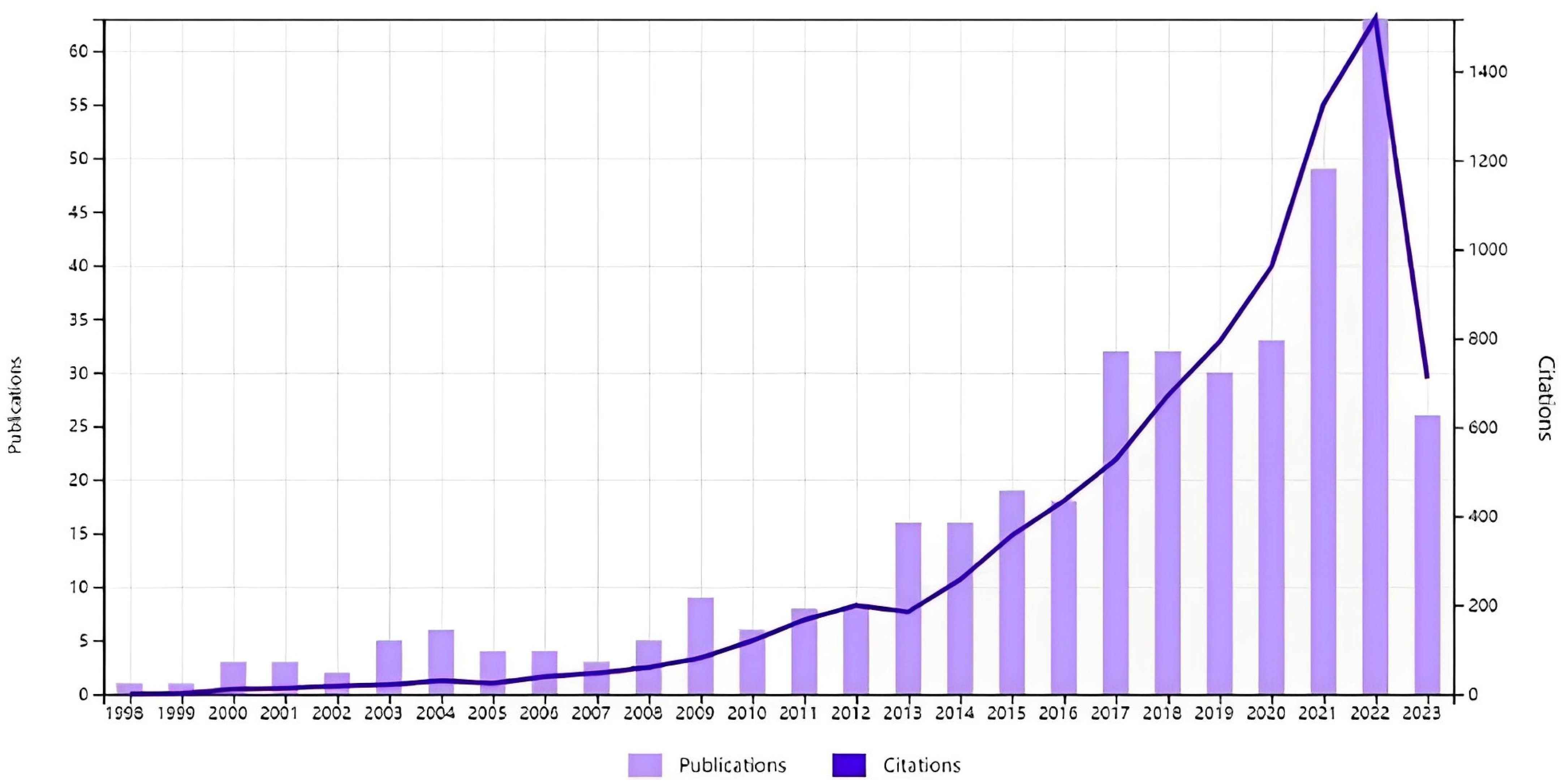
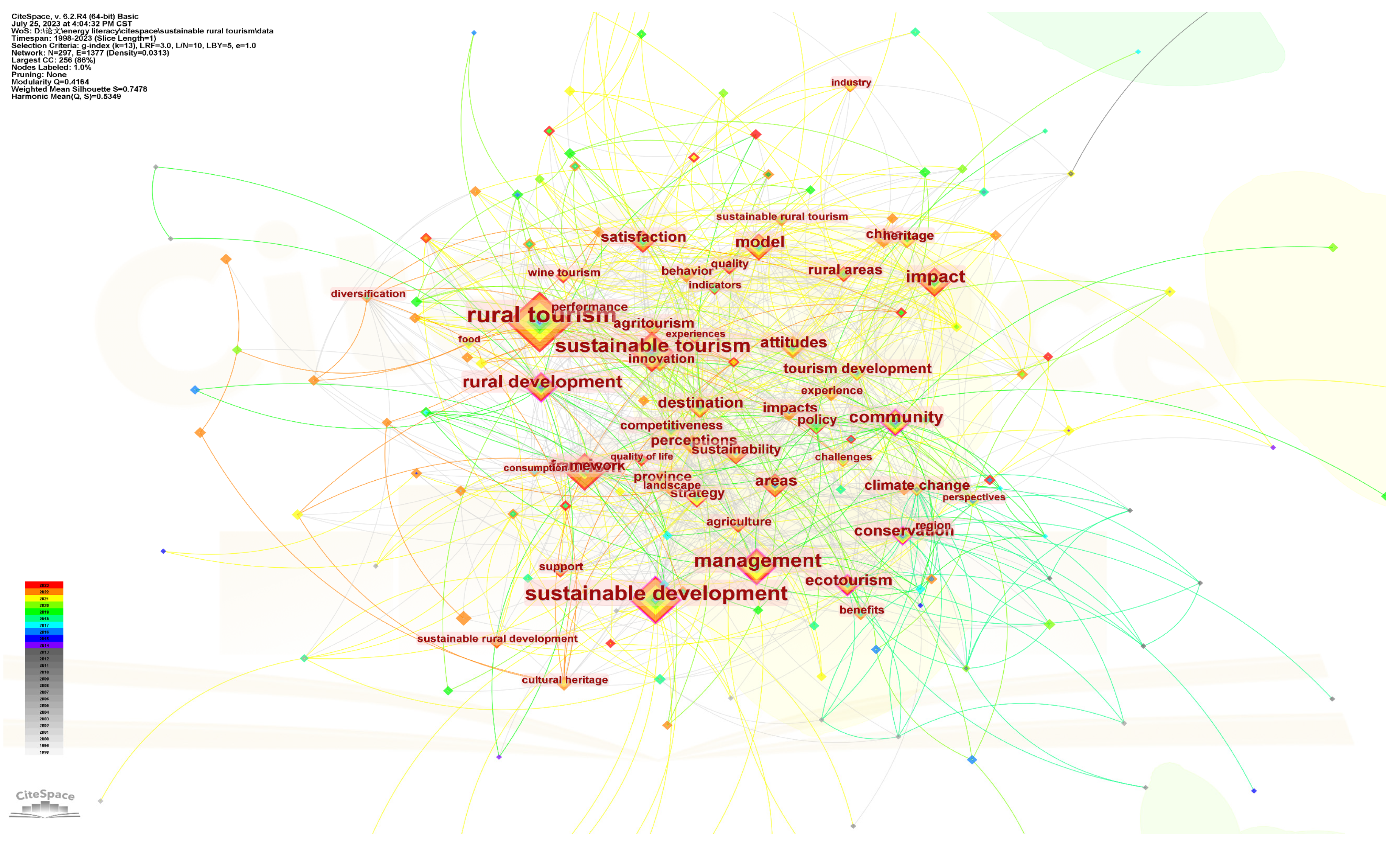
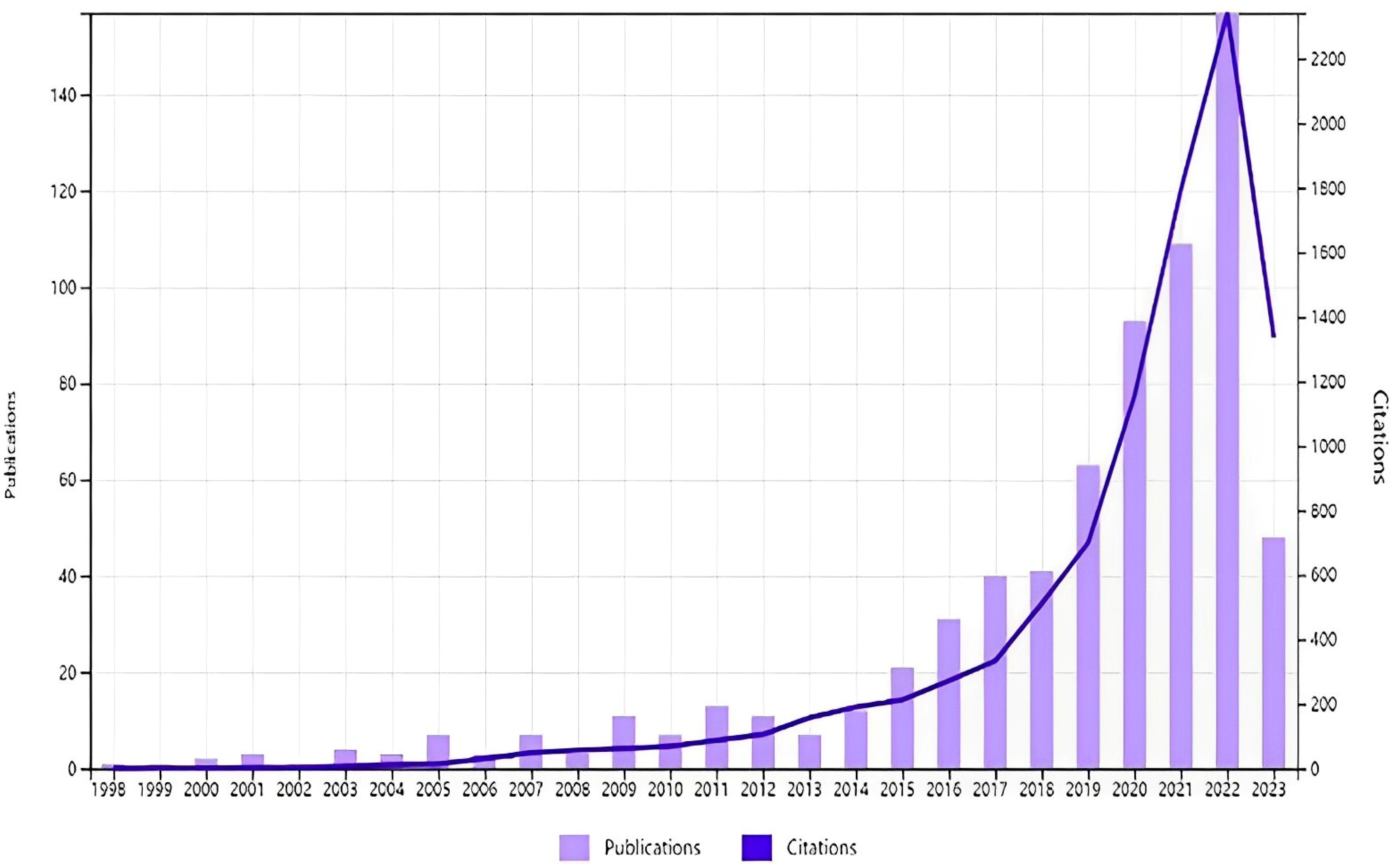
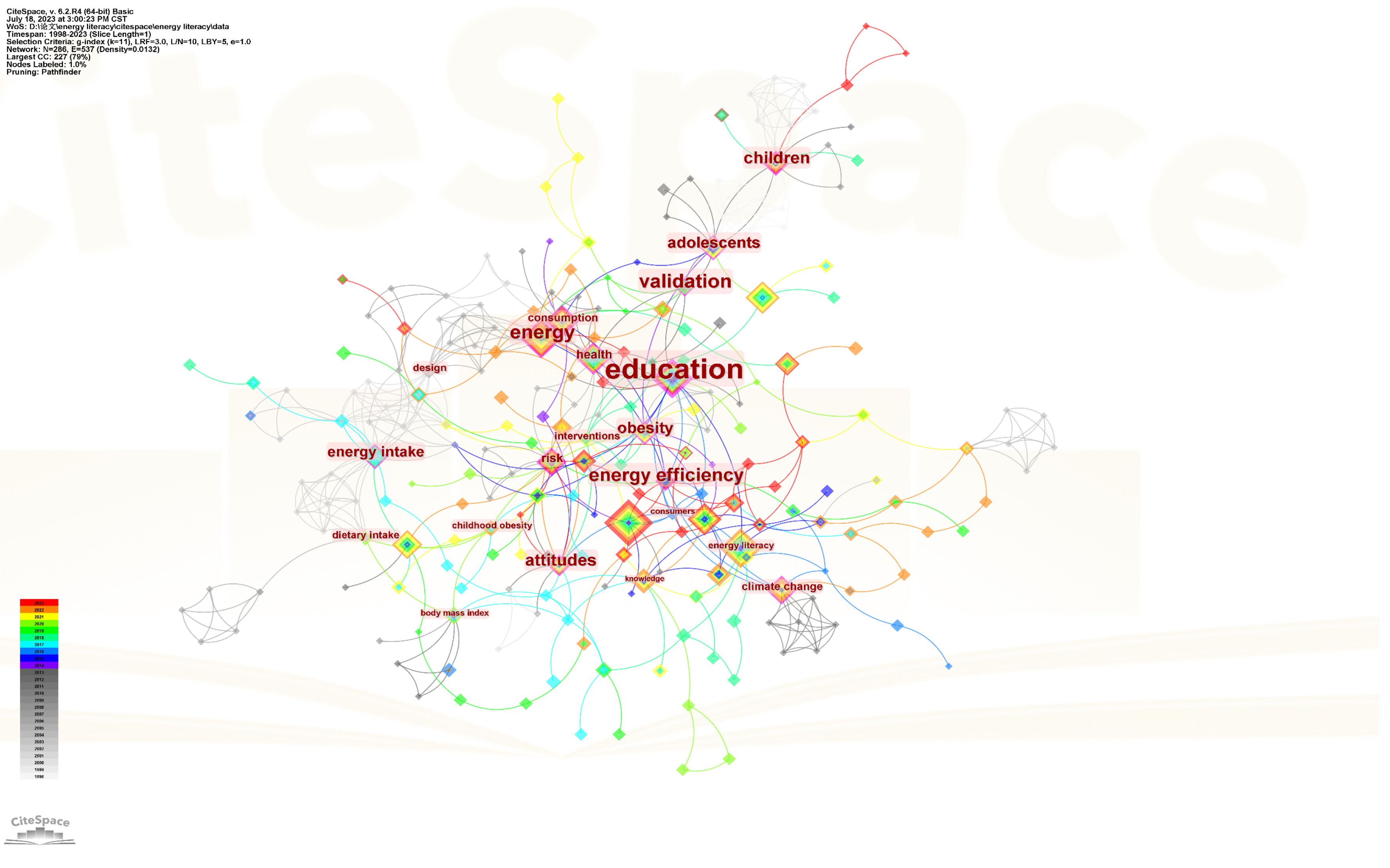
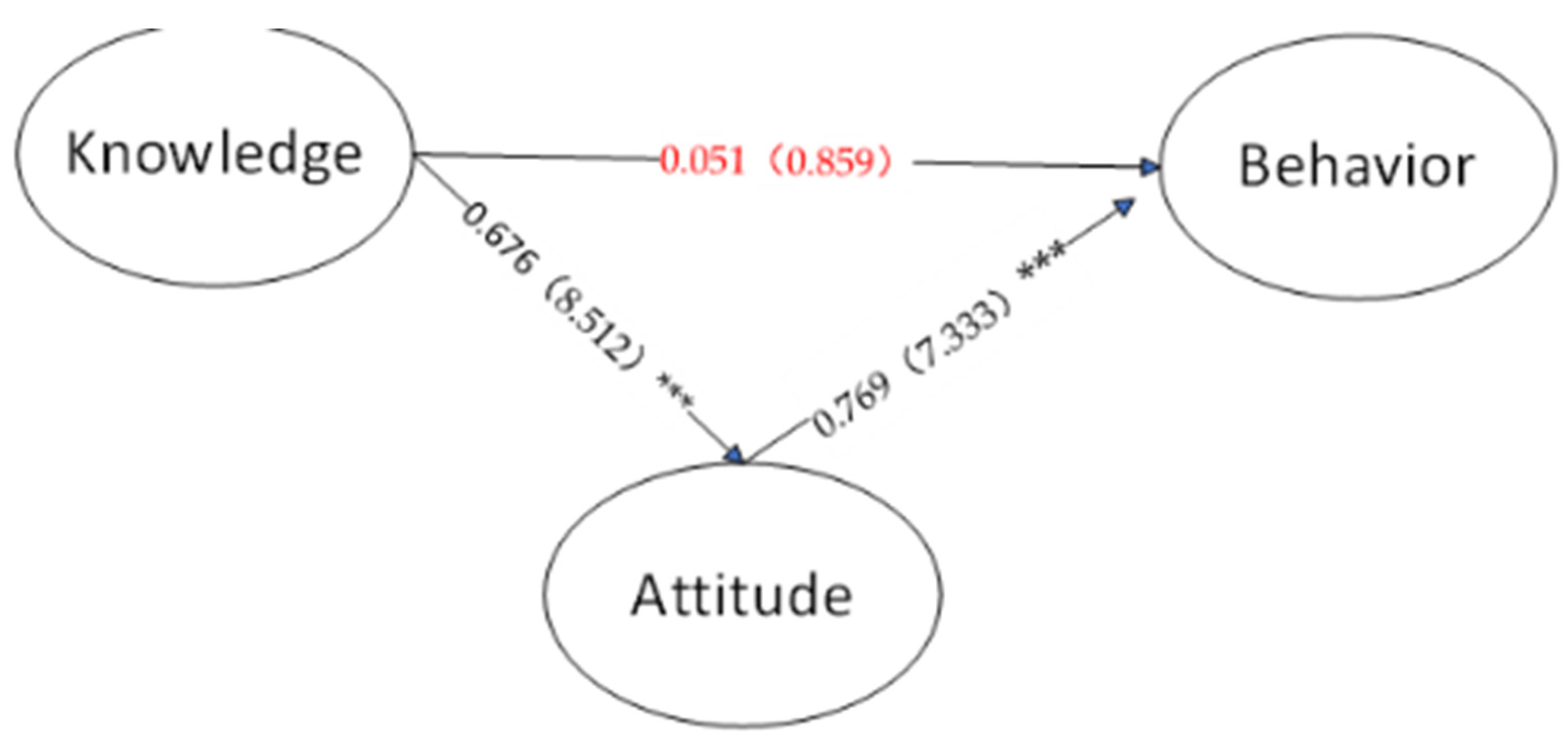
| Variables | n | % | Variables | n | % |
|---|---|---|---|---|---|
| Gender | Monthly income (RMB) | ||||
| Male | 125 | 46.8 | Below 1000 | 51 | 19.0 |
| Female | 142 | 53.2 | 1001~3000 | 64 | 23.8 |
| Age | 3001~5000 | 64 | 23.8 | ||
| Under 18 | 23 | 8.7 | 5001~10,000 | 64 | 23.8 |
| 19~24 | 12 | 4.3 | More than 10,000 | 13 | 4.8 |
| 25~30 | 47 | 17.4 | Whether engaged in tourism | ||
| 31~40 | 82 | 30.4 | Yes | 165 | 43.1 |
| 41~50 | 47 | 17.4 | No | 218 | 56.9 |
| Over 50 | 58 | 21.7 | Tourism-related sectors | ||
| Education | Accommodation | 39 | 23.8 | ||
| Junior high school and below | 129 | 47.8 | Transportation | 31 | 19.0 |
| High school/technical school | 70 | 26.1 | Catering | 24 | 14.3 |
| College | 47 | 17.4 | Attraction | 63 | 38.1 |
| Undergraduate | 12 | 4.3 | |||
| Master and above | 12 | 4.3 |
| Construct | Number | Question Items | Sample 1 (n = 188) | Sample 2 (n = 195) | Sample 3 (n = 383) | |||
|---|---|---|---|---|---|---|---|---|
| Mean | Std. | Mean | Std. | Mean | Std. | |||
| Knowledge | K1 | I know about the definition of energy (electricity, water, gas) | 3.46 | 1.18 | 4.08 | 0.89 | 3.78 | 1.09 |
| K2 | I know about the types of fossil fuel energy | 2.91 | 1.26 | 3.63 | 1.10 | 3.28 | 1.24 | |
| K3 | I know about the types of renewable energy sources | 3.33 | 1.22 | 3.79 | 0.99 | 3.57 | 1.14 | |
| K4 | I know about the main ways of producing electricity | 3.36 | 1.22 | 3.98 | 0.91 | 3.68 | 1.12 | |
| K5 | I know about the energy efficiency Index of electrical appliances | 3.29 | 1.18 | 3.62 | 1.04 | 3.46 | 1.13 | |
| K6 | I am aware of the use of energy in rural tourism development | 2.86 | 1.23 | 2.94 | 1.11 | 2.90 | 1.17 | |
| K7 | I know about the impact of energy consumption on rural tourism development | 3.08 | 1.27 | 3.38 | 1.09 | 3.23 | 1.19 | |
| K8 | I know about the impact of energy consumption on the environment | 3.78 | 1.16 | 4.05 | 0.91 | 3.93 | 1.05 | |
| K9 | I know about the importance of energy consumption to society | 3.83 | 1.13 | 4.29 | 0.81 | 4.06 | 1.01 | |
| K10 | I know about that saving energy is the most cost-effective way to solve the problem of energy shortage | 3.79 | 1.10 | 4.03 | 1.00 | 3.91 | 1.06 | |
| Attitude | A1 | I believe that people have a responsibility to take control of their energy consumption and change their habits to minimize waste. | 4.35 | 0.89 | 4.38 | 0.77 | 4.36 | 0.83 |
| A3 | I would prefer appliances that are more energy efficient but more expensive (e.g., fridges, air conditioners, etc.). | 3.27 | 1.09 | 3.79 | 1.06 | 3.53 | 1.10 | |
| A4 | I think I can help solve energy problems by working with others. | 3.56 | 1.06 | 3.92 | 0.94 | 3.75 | 1.02 | |
| A5 | I think it is important to save energy | 4.64 | 0.70 | 4.49 | 0.72 | 4.56 | 0.72 | |
| A6 | I think the way I use energy can make a difference to current environmental problems | 3.24 | 1.07 | 3.71 | 1.01 | 3.48 | 1.07 | |
| A7 | I would do better if I knew how to save energy | 4.06 | 0.96 | 4.20 | 0.80 | 4.13 | 0.89 | |
| A8 | I would be happy to pay attention to energy use issues related to tourism. | 3.55 | 1.13 | 3.95 | 0.94 | 3.75 | 1.06 | |
| A9 | I think the government should develop more ways to use renewable energy sources | 3.96 | 0.95 | 4.35 | 0.64 | 4.16 | 0.83 | |
| A10 | I think the government should encourage the use of new technologies to improve energy efficiency | 4.05 | 0.92 | 4.41 | 0.63 | 4.24 | 0.81 | |
| Behavior | B1 | I usually walk or cycle rather than travelling by car when the journey is very short. | 4.35 | 0.86 | 4.19 | 0.81 | 4.27 | 0.84 |
| B3 | I will save electricity by keeping the room temperature within reasonable limits (air conditioning, heating). | 4.05 | 0.95 | 4.18 | 0.83 | 4.12 | 0.90 | |
| B4 | I will reduce the frequency and time of showering to save water. | 3.41 | 1.29 | 3.47 | 1.12 | 3.44 | 1.21 | |
| B5 | I usually unplug electrical appliances that are not in use at the moment (chargers, TV, microwave, etc.) | 3.93 | 1.15 | 3.77 | 1.09 | 3.85 | 1.13 | |
| B6 | I usually switch off the lights when I leave a room. | 4.39 | 0.83 | 4.31 | 0.80 | 4.35 | 0.82 | |
| B7 | My family and I use more environmentally friendly gas and appliances for cooking | 4.02 | 0.89 | 4.10 | 0.87 | 4.06 | 0.89 | |
| B8 | I actively buy more energy efficient products | 3.83 | 0.97 | 4.13 | 0.79 | 3.98 | 0.90 | |
| B9 | I often encourage others to save energy | 3.74 | 1.15 | 3.95 | 0.85 | 3.85 | 1.02 | |
| B10 | I often encourage my family to buy energy efficient appliances | 3.72 | 1.14 | 4.02 | 0.81 | 3.87 | 1.00 | |
| B11 | I Know exactly how much I spend on household energy consumption (water, electricity, gas, etc.) | 3.53 | 1.198 | 3.80 | 1.03 | 3.67 | 1.13 | |
| B12 | I usually separate my rubbish and recycle cans, paper, plastic bottles, etc. | 3.83 | 1.11 | 3.77 | 1.06 | 3.80 | 1.09 | |
| Construct | Number | p-Value | Factor Loading | p-Value | α | CR | AVE |
|---|---|---|---|---|---|---|---|
| Knowledge | K1 | 0.00 | 0.70 | 0.00 | 0.91 | 0.93 | 0.56 |
| K2 | 0.00 | 0.76 | |||||
| K3 | 0.00 | 0.80 | |||||
| K4 | 0.00 | 0.79 | |||||
| K5 | 0.00 | 0.72 | |||||
| K6 | 0.46 | 0.72 | |||||
| K7 | 0.03 | 0.73 | |||||
| K8 | 0.07 | 0.79 | |||||
| K9 | 0.00 | 0.74 | |||||
| K10 | 0.03 | 0.72 | |||||
| Attitude | A1 | 0.80 | 0.63 | 0.00 | 0.82 | 0.89 | 0.47 |
| A3 | 0.00 | 0.52 | |||||
| A4 | 0.00 | 0.69 | |||||
| A5 | 0.00 | 0.57 | |||||
| A6 | 0.00 | 0.68 | |||||
| A7 | 0.29 | 0.77 | |||||
| A8 | 0.00 | 0.75 | |||||
| A9 | 0.00 | 0.79 | |||||
| A10 | 0.00 | 0.75 | |||||
| Behavior | B1 | 0.02 | 0.61 | 0.17 | 0.91 | 0.92 | 0.51 |
| B3 | 0.21 | 0.74 | |||||
| B4 | 0.87 | 0.66 | |||||
| B5 | 0.08 | 0.69 | |||||
| B6 | 0.14 | 0.66 | |||||
| B7 | 0.36 | 0.78 | |||||
| B8 | 0.00 | 0.81 | |||||
| B9 | 0.18 | 0.81 | |||||
| B10 | 0.02 | 0.82 | |||||
| B11 | 0.03 | 0.66 | |||||
| B12 | 0.47 | 0.69 |
| Hypotheses | Path | Path Coefficients | t-Statistic | R2 | Conclusion |
|---|---|---|---|---|---|
| H1 | Attitude ← Knowledge | 0.676 | 8.512 | 0.372 | supported |
| H2 | Behavior ← Attitude | 0.769 | 7.333 | 0.498 | supported |
| H3 | Behavior ← Knowledge | 0.051 | 0.859 | unsupported |
| Effects | Original Sample (O) | Sample Mean (M) | Bias | 5.0% | 95.0% |
|---|---|---|---|---|---|
| knowledge → Attitude → behavior | 0.355 | 0.361 | 0.006 | 0.289 | 0.419 |
Disclaimer/Publisher’s Note: The statements, opinions and data contained in all publications are solely those of the individual author(s) and contributor(s) and not of MDPI and/or the editor(s). MDPI and/or the editor(s) disclaim responsibility for any injury to people or property resulting from any ideas, methods, instructions or products referred to in the content. |
© 2023 by the authors. Licensee MDPI, Basel, Switzerland. This article is an open access article distributed under the terms and conditions of the Creative Commons Attribution (CC BY) license (https://creativecommons.org/licenses/by/4.0/).
Share and Cite
Sun, H.; Wu, S.; Zhang, B. Energy Literacy of Residents in Rural Communities: Comparison of Tourism and Non-Tourism Villages. Energies 2023, 16, 7135. https://doi.org/10.3390/en16207135
Sun H, Wu S, Zhang B. Energy Literacy of Residents in Rural Communities: Comparison of Tourism and Non-Tourism Villages. Energies. 2023; 16(20):7135. https://doi.org/10.3390/en16207135
Chicago/Turabian StyleSun, Huan, Shaofeng Wu, and Bolun Zhang. 2023. "Energy Literacy of Residents in Rural Communities: Comparison of Tourism and Non-Tourism Villages" Energies 16, no. 20: 7135. https://doi.org/10.3390/en16207135
APA StyleSun, H., Wu, S., & Zhang, B. (2023). Energy Literacy of Residents in Rural Communities: Comparison of Tourism and Non-Tourism Villages. Energies, 16(20), 7135. https://doi.org/10.3390/en16207135





